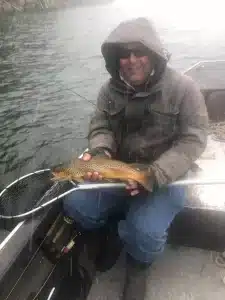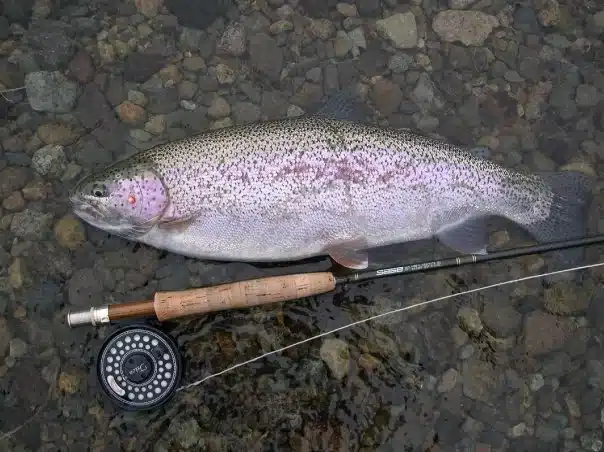Many fly fishermen think of Mountain Whitefish as a nuisance, even the crew at Always A Good Day does sometimes. If you have ever guided you think of them as your best friend on those days when catching a trout is tough. But in the early months of winter anglers should remember that they provide hungry trout with a major food source – their eggs.
This past weekend I went fishing on one of our local rivers. Thinking more about the weather than the time of year I brought a bunch of super small midges and some Blue Winged Olives. When I arrived at the river I noticed that there were lots of bugs flying around. The problem was there was not one fish working the surface. Then it hit me. It is November and the whitefish must be spawning. UGH! My egg pattern and bead boxes were right where I had left them; on my counter because I had thought I wouldn’t need them.
The Mountain Whitefish is Your Friend
The Mountain Whitefish is a native of most western waters. Maligned as a pain in the neck, it is during the early winter months that fishermen should appreciate this indicator species. Needing cold, clear water, these fish were once a mainstay of Native American and pioneer diets. Today the presence of the Whitefish in a stream or lake signifies that the ecosystem maintains somewhat clean water and diverse biological forms of life for food. During their spawning season, they contribute to the underwater smorgasbord by broadcasting a lot of eggs across the bottom of both streams and lakes. These eggs are so prolific and protein-rich that other species of fish, like trout, forsake harder to acquire food sources. Simply put, if you’re hungry would you rather have a steak or piece of kale?

Mountain Whitefish eggs are small (2-4 mm) in diameter. Most fly shops carry a representation of a whitefish egg if they are located in the west. The best patterns usually run size 16 or 18. In recent years I have begun using beads (I know not a true fly) because they usually aren’t ravenously swallowed by the trout because of how they are rigged to the line. The health of the trout outweighs my hubris of what is and isn’t a fly. That is why I would suggest using a bead over traditional egg patterns.
The Diner is Open
Fishing a Whitefish egg pattern is exactly like fishing a traditional nymph. Your indicator should be 2 ½ to 3 times the depth of the water you are fishing in from your egg pattern.

The key is to know what type of water they spawn in. Typically this is water that is moving at about 2 miles an hour that has a rocky bottom that is over a foot deep. Because it is late in the year, water temps will be cooler. This makes having a slow pool below the run where the fish are spawning very desirable. Rainbows and browns definitely prefer to eat the loose eggs as they drift down without expending a lot of energy from a strong current. It is like eating pizza on your couch instead of while you are jogging around the block.
If the whities are spawning in great numbers, the predators will move into the faster water to devour the eggs. This is when the fishing gets silly. Trout will get dumb because of the large amount of food pouring into the water. This makes Whitefish spawning time one of the most productive times of the year for fishing – but only if you know it is happening.


